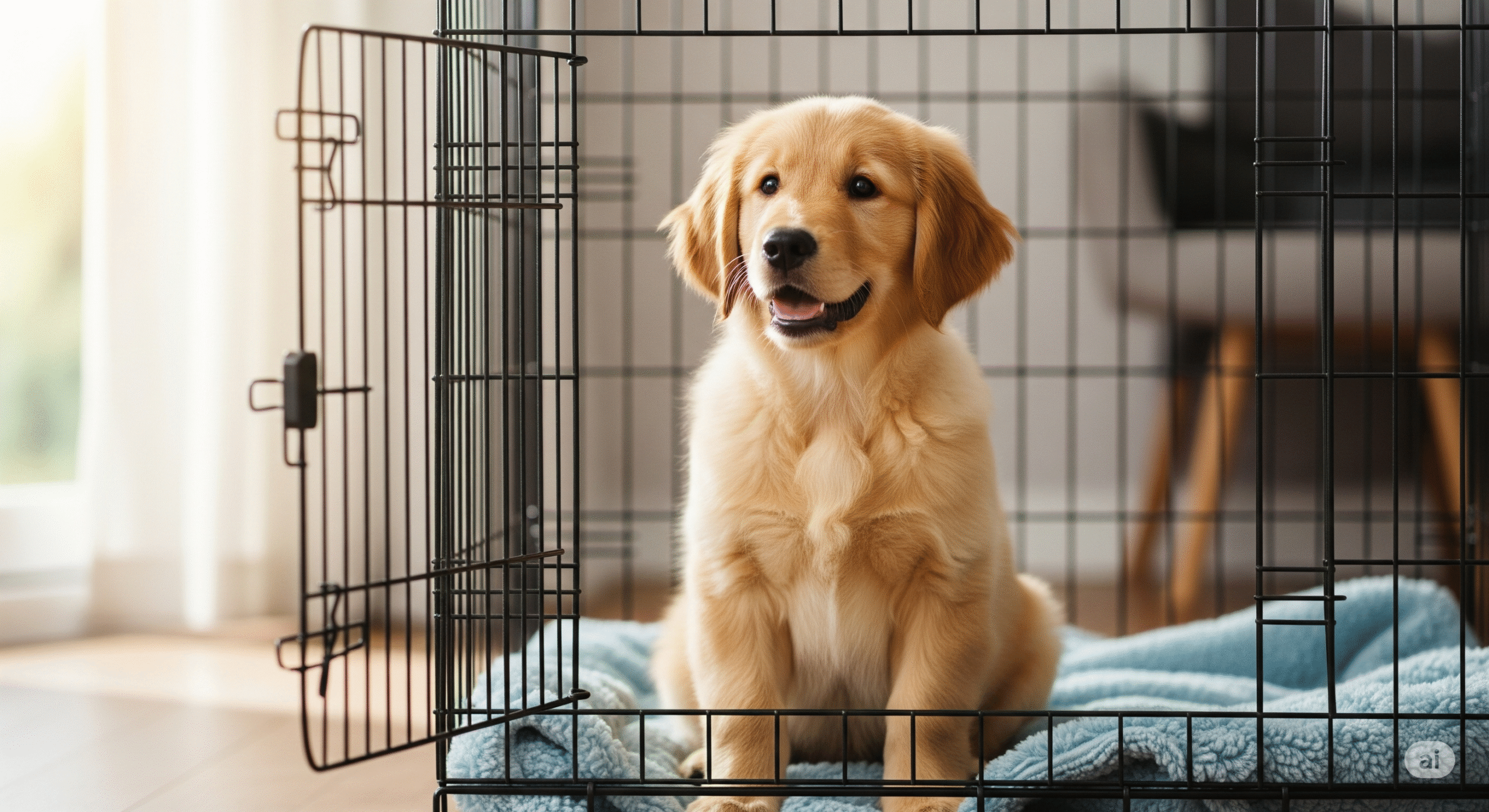Crate training is one of the most valuable skills you can teach your new puppy—when done right. A crate becomes your pup’s safe den, aids in potty training, and prevents destructive behaviors. But if introduced poorly, it can create fear and anxiety.
This vet-approved positive method will show you:
✔ Why crate training benefits puppies (it’s not “cruel” when done correctly!)
✔ Step-by-step instructions for stress-free acclimation
✔ Common mistakes that backfire
✔ Pro tips to make the crate a happy place
Let’s create a positive crate experience for your pup!
Why Crate Train? The Surprising Benefits 🌟
1. Safety & Security 🔒
- Prevents chewing hazards (electrical cords, toxic plants) when unsupervised
- Gives puppies a cozy retreat when overwhelmed
2. Speeds Up Potty Training 🚽
Dogs naturally avoid soiling their sleeping area. A properly sized crate:
✔ Teaches bladder control
✔ Reduces accidents
3. Travel & Vet Visits Made Easier ✈️
A crate-trained dog is less stressed during:
- Car rides
- Boarding
- Emergency evacuations
Choosing the Right Crate 🛒
Types of Crates:
| Type | Best For | Price |
|---|---|---|
| Wire | Ventilation, foldable | $40–$150 |
| Plastic | Travel, den-like feel | $50–$200 |
| Soft-sided | Short-term use only | $60–$120 |
Sizing Guide 📏
The crate should be:
✔ Just big enough for your pup to stand, turn, and lie down
✔ Too large? Use a divider (common with wire crates)
Pro Tip: Measure your adult dog’s size (if known) and buy a crate they’ll grow into—with a divider for now.
The Stress-Free 7-Step Crate Training Method 🐕❤️
Step 1: Introduce the Crate Slowly 🐶<
- Place it in a high-traffic area (not isolated)
- Keep the door open and toss treats inside
- Let your pup explore voluntarily
Step 2: Make It Cozy 🛏️
Add:
✔ Soft blanket (unless your pup chews fabric)
✔ A snuggle puppy (heartbeat toy reduces anxiety)
✔ A cover (for wire crates—creates a den-like feel)
Step 3: Feed Meals in the Crate 🍗
- Start with the bowl near the entrance
- Gradually move it all the way inside
Step 4: Short, Positive Sessions ⏱️
- Say “Crate!” and toss a treat inside
- When pup enters, praise + treat
- Let them exit immediately
- Gradually increase time inside (start with 10 seconds)
Step 5: Close the Door (Briefly) 🔐
- Close door for 5 seconds while pup eats a treat
- Open before they finish
- Slowly increase duration
Step 6: Leave the Room 🚪
- Step away for 10 seconds, return, and reward quiet behavior
- Build up to 30+ minutes over days/weeks
Step 7: Overnight Success 🌙
- Place crate near your bed initially (reduces crying)
- Expect 1–2 nighttime potty breaks for young pups
What NOT to Do: Common Crate Training Mistakes ❌
🚫 Forcing the puppy inside (creates fear)
🚫 Using the crate for punishment (should = happy place)
🚫 Ignoring crying from discomfort (vs. protest whining)
🚫 Leaving too long (max = age in months +1 hour)
Solving Crate Training Challenges 🛠️
Puppy Cries in Crate? Try This:
✔ White noise machine (calms anxiety)
✔ Cover the crate (darkness helps)
✔ Exercise before crating (tired pup = quiet pup)
Chewing the Crate? Fixes:
✔ Bitter apple spray on bars
✔ More chew toys (frozen Kongs keep them busy)
Sample Crate Training Schedule 📅
| Time | Activity |
|---|---|
| 7 AM | Potty → Play → Breakfast in crate |
| 8 AM | 15-min crate session (you’re home) |
| 10 AM | 30-min crate nap |
| 12 PM | Potty → Lunch in crate |
| 2 PM | 1-hour crate time (with chew toy) |
Adjust based on age! Younger pups need more frequent breaks.
Final Thoughts: Patience Wins! 🏆
Crate training takes 3 days to 3 weeks for most pups. Remember:
✅ Go at your puppy’s pace
✅ Always associate the crate with positivity
✅ Never rush the process
Ready for a Crate-Trained Pup? 🐕✨

Start with very short departures, just a minute or two, and gradually increase the time you’re away. This helps your puppy learn that you always return. It’s also the best way to prevent separation anxiety. If you notice signs of distress like barking, destruction, or potty accidents only when you’re gone, it’s crucial to address it early. Our comprehensive guide, Puppy Separation Anxiety: Signs & Training Fixes, provides a step-by-step training plan.






